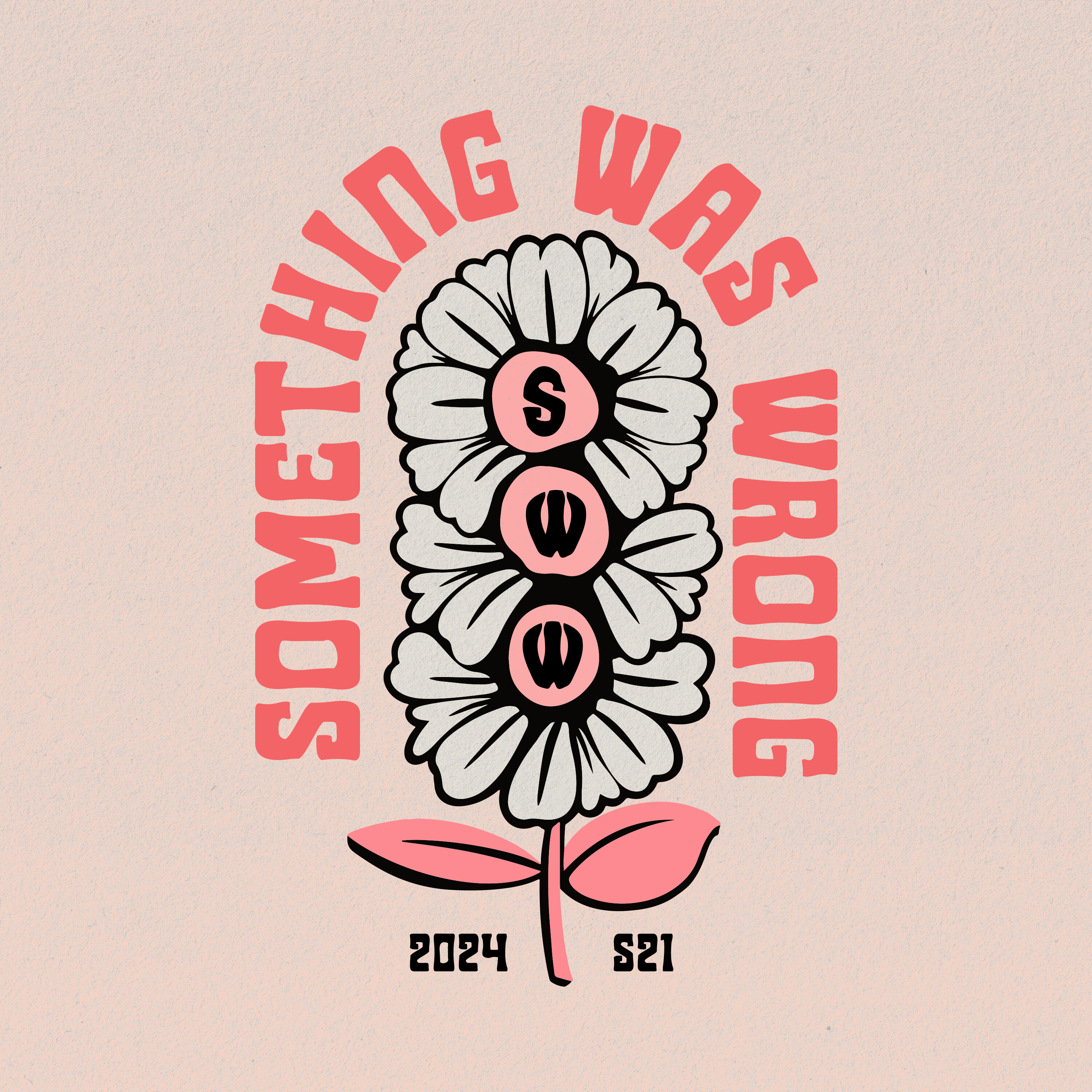
Data Points: Stalking (featuring Lenora Claire)

Something Was Wrong
Deep Dive
Shownotes Transcript
Wondery Plus subscribers can listen to Something Was Wrong early and ad-free right now. Join Wondery Plus in the Wondery app or on Apple Podcasts.
Hi friends, it's Lenora Clare. I'm a survivor, activist, Los Angeles District Attorney Crime Victims Advisory Board member, and investigator at Special K Investigations. I'm guest hosting this episode of Broken Cycle Media's new series of educational episodes, Data Points. These special episodes will include educational information, statistics, and support on different topics that are important to our community. Thank you so much for listening.
While each jurisdiction has their own language and criteria, generally stalking is defined as a pattern of behavior directed at a specific person that will cause a reasonable person to fear for the person's safety or for the safety of others, or suffer substantial emotional distress. Stalking can include harassment, following the victim, posting information, whether true or false, about the victim publicly, and more.
While many crimes center around a single traumatic event, stalking is an ongoing pattern of distressing and/or dangerous behaviors. It's important to remember stalking is a vastly underreported crime, especially in vulnerable communities that may not be comfortable with reporting. The most up-to-date United States statistics reflect 13.5 million Americans actively being stalked as of 2022.
Stalking is a heavily nuanced crime where anyone can be a victim or survivor, as well as a perpetrator. Stalking transcends sexuality, gender, identity, race, religion, and socioeconomic background. An estimated 1 in 3 women and 1 in 6 men will experience stalking in their lifetime. 34% of female and 30% of male survivors report their first stalking experience occurring between the ages of 18 and 24.
1 in 3 bisexual women and 1 in 14 bisexual men have experienced stalking. 1 in 5 lesbian or gay women have been stalked as have 1 in 9 gay men. 40% of stalkers are believed to be former intimate partners. 42% of stalkers are defined as acquaintances. 19% are strangers. 80% of victims are stalked in person and through technology or social media. 36% of stalking cases last longer than one year.
Stalking frequently coincides with other types of criminal behavior and victimization. For example, 31% of women who are stalked also report being sexually assaulted by that partner. Stalking also increases the risk of homicide three times. However, it is important to note that these statistics may not support the accuracy of danger and lethality.
When there is a homicide, the perpetrator almost never receives an additional stalking charge. It's entirely plausible. Many homicides have a stalking component but have not been designated as such. An estimated one in three stalking victims report the stalking to law enforcement. According to a report by the U.S. Department of Justice, in 2019, about 16% of all stalking victims sought victim services and 74% of the victims who sought services actually received them.
Stalking can have a grave impact on many aspects of a victim and their loved ones' lives. That impact can be mental, emotional, and/or physical in nature. One in three stalking victims report feeling physically sick following the stalking. As a University of Kent Psychology Department study reveals, 37% of stalking victims met the criteria for a diagnosis of post-traumatic stress disorder.
Stalking is a unique and misunderstood crime. While many crimes center around a single traumatic event, stalking is an ongoing pattern of distressing and/or dangerous behaviors which can result in CPTSD, anxiety, depression, and hypervigilance. Many report that even after adjudication or perceived "resolution," they never feel safe and have been forever changed by the experience.
The federal government, all 50 states, the District of Columbia, and U.S. territories have enacted criminal laws to address stalking. However, each state possesses varied stalking-related laws. These laws largely depend on victim fear and emotional distress, as well as the intent of the stalker.
For example, as the U.S. Department of Justice 2019 Special Report on Stocking Shares, quote, some state laws require prosecutors to establish fear of death or serious bodily harm, while others require only that prosecutors establish that the victim suffered emotional distress, end quote.
After the 2023 Supreme Court ruling of Counterman v. Colorado, which focused around language and intent around stalking, some victim-survivors have reported difficulty in obtaining restraining orders and lack of law enforcement intervention. Oftentimes, victims of stalking seek protective orders in order to establish some sort of level of safety. However, these can vary greatly from jurisdiction to jurisdiction. In most states, a person has issued a temporary restraining order before attempting to grant a longer one.
There can also be the possibility of an emergency order in certain situations. There are other methods of risk management available as well. The SparkSharp risk assessment tool is an excellent starting place for both potentially defining what has occurred and validating an individual's experience. That link can be found in the episode notes.
Another method of risk minimization is documenting evidence. Stalking is a crime where evidence collection is not only essential for protective orders and prosecution, it's also key in monitoring the threats and potential for threats from the individual. For those comfortable with law enforcement, it can be very beneficial to create an organized timeline of events that clearly shows escalation or the potential for such. Most experts advise blocking when it's harassment, but if it's stalking, it's best to be non-responsive, yet still collect all the threats coming in.
It may also be a way to know what places to avoid if the perpetrator mentions seeing you there. It's important to switch up daily patterns if you believe you're being surveilled. Social media can also be an easy way for someone to monitor you, so it's advised to use discretion when posting and only post after you've left a location. Being mindful of clicking suspicious links is another helpful tip. It can be an easy way for an individual to get into your tech and monitor you through your GPS.
Ring and security cameras are also an excellent security measure, as is the removal of your home address from the internet. You can do this manually from opting out of sites like Truthfinder and Whitepages or paying for services like DeleteMe.
All of the statistics provided in this episode are derived from the Stalking Prevention, Awareness and Resource Center, as well as the Center for Disease Control, unless otherwise noted, and can be found in the episode notes. For access to the resources that SPARK offers, visit stalkingawareness.org. Further resources are also available at stopstalkingus.com. I'm also available at specialkpi.com for further information and resources.
For more information about the nonprofit organizations mentioned prior, please visit the episode notes. For a comprehensive list of organizations that are working to help victims of stalking and prevent others from experiencing it, please visit somethingwaswrong.com backslash resources. Many of the amazing groups listed on the website are only able to exist because of the community's help and support from people like you.
If you'd like to find out more information about volunteer opportunities, please feel free to go to the resources page as well as reach out directly to the organization of your choice. I'm Lenora Clare and you can find me at LenoraClare.com or at Lenora Clare. That's my handle pretty much everywhere. Thank you so much for listening and learning with us.
If you like Something Was Wrong, you can listen early and ad-free right now by joining Wondery Plus in the Wondery app or on Apple Podcasts. Prime members can listen ad-free on Amazon Music. Before you go, tell us about yourself by filling out a short survey at wondery.com slash survey.
Scammers are best known for living the high life until they're forced to trade it all in for handcuffs and an orange jumpsuit once they're finally caught. I'm Sachi Cole. And I'm Sarah Hagee. And we're the host of Scamfluencers, a weekly podcast from Wondery that takes you along the twists and turns of some of the most infamous scams of all time, the impact on victims, and what's left once the facade falls away.
We've covered stories like a Shark Tank certified entrepreneur who left the show with an investment but soon faced mounting bills, an active lawsuit filed by Larry King, and no real product to push. He then began to prey on vulnerable women instead, selling the idea of a future together while stealing from them behind their backs.
To the infamous scams of Real Housewives stars like Teresa Giudice, what should have proven to be a major downfall only seemed to solidify her place in the Real Housewives Hall of Fame. Follow Scamfluencers on the Wondery app or wherever you get your podcasts. You can listen to Scamfluencers early and ad-free right now on Wondery+.